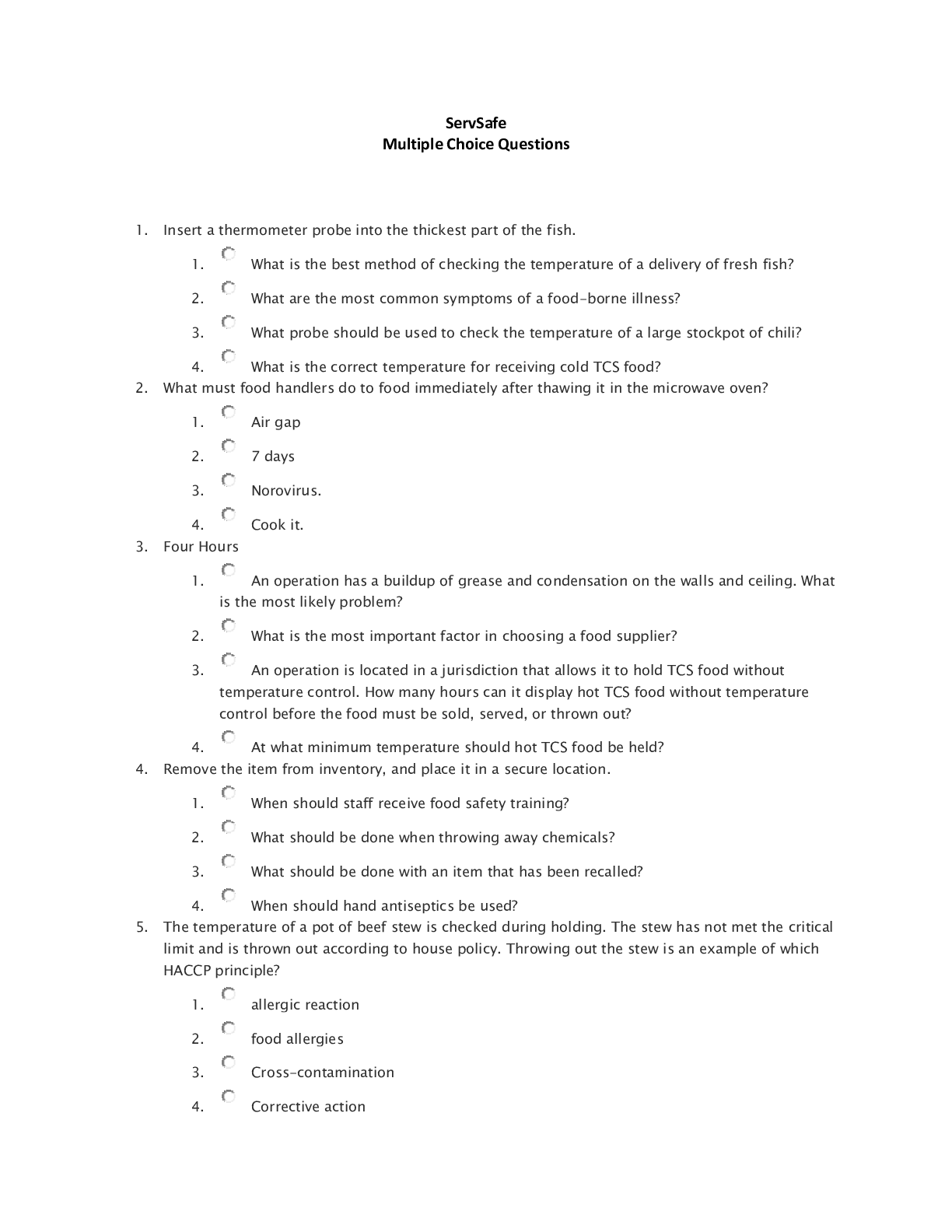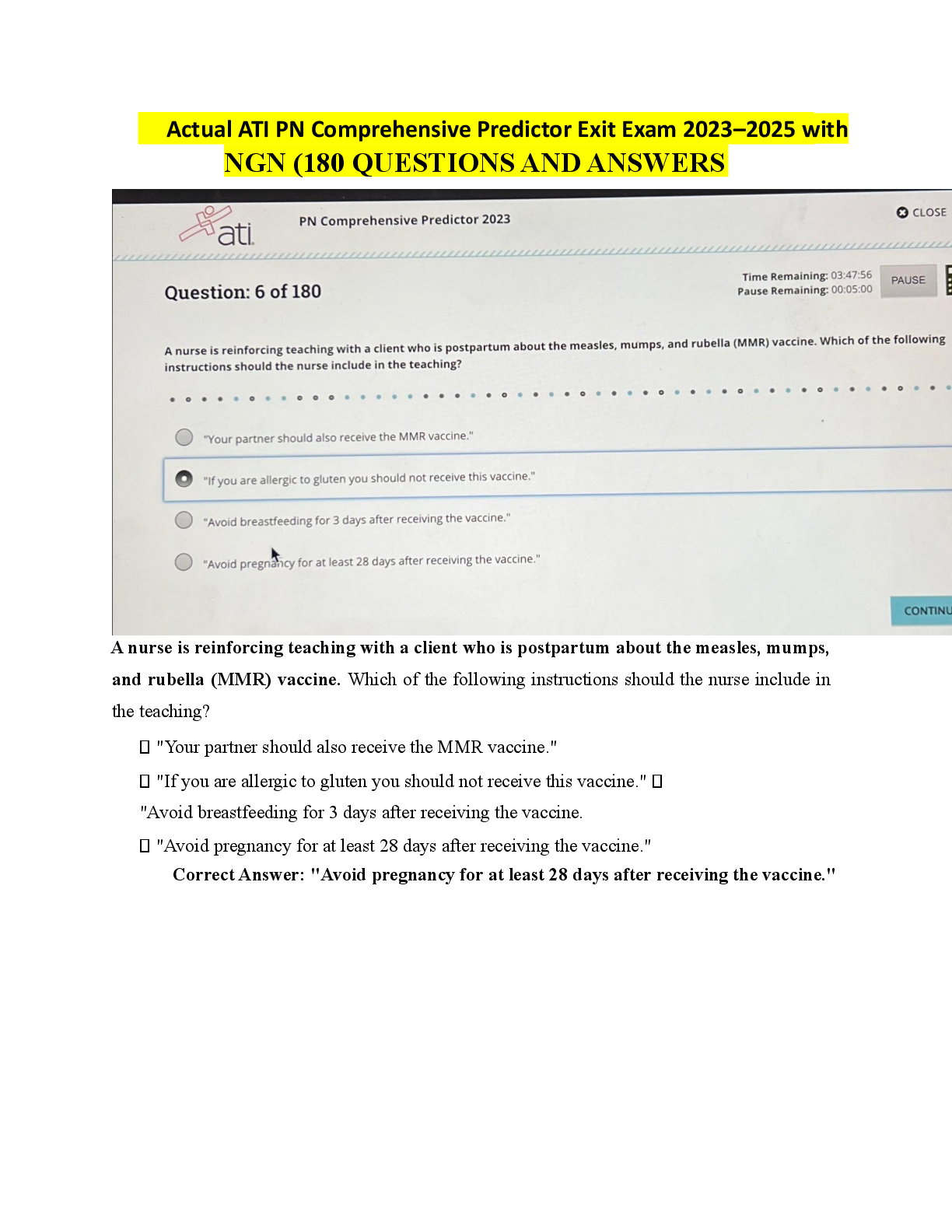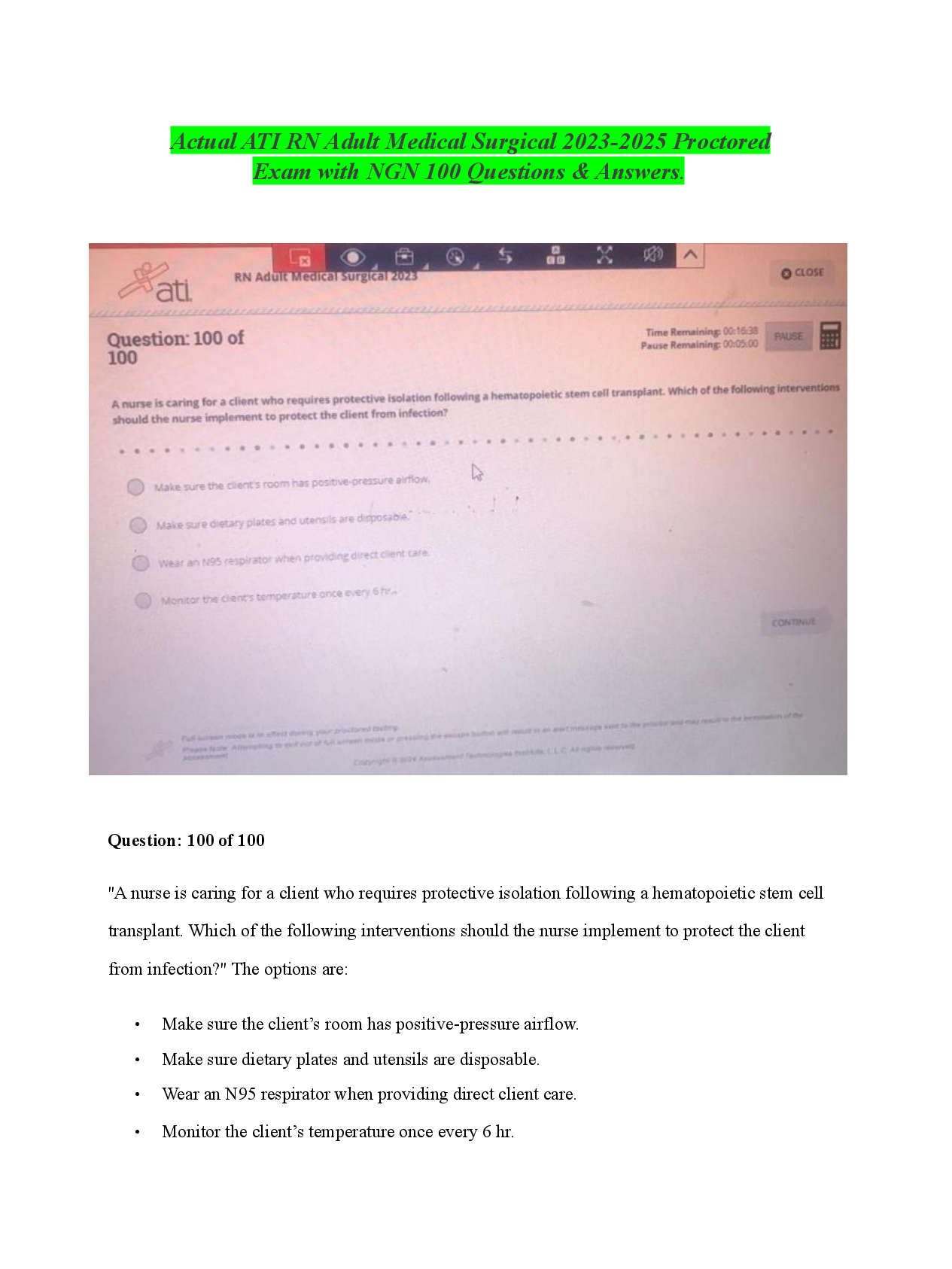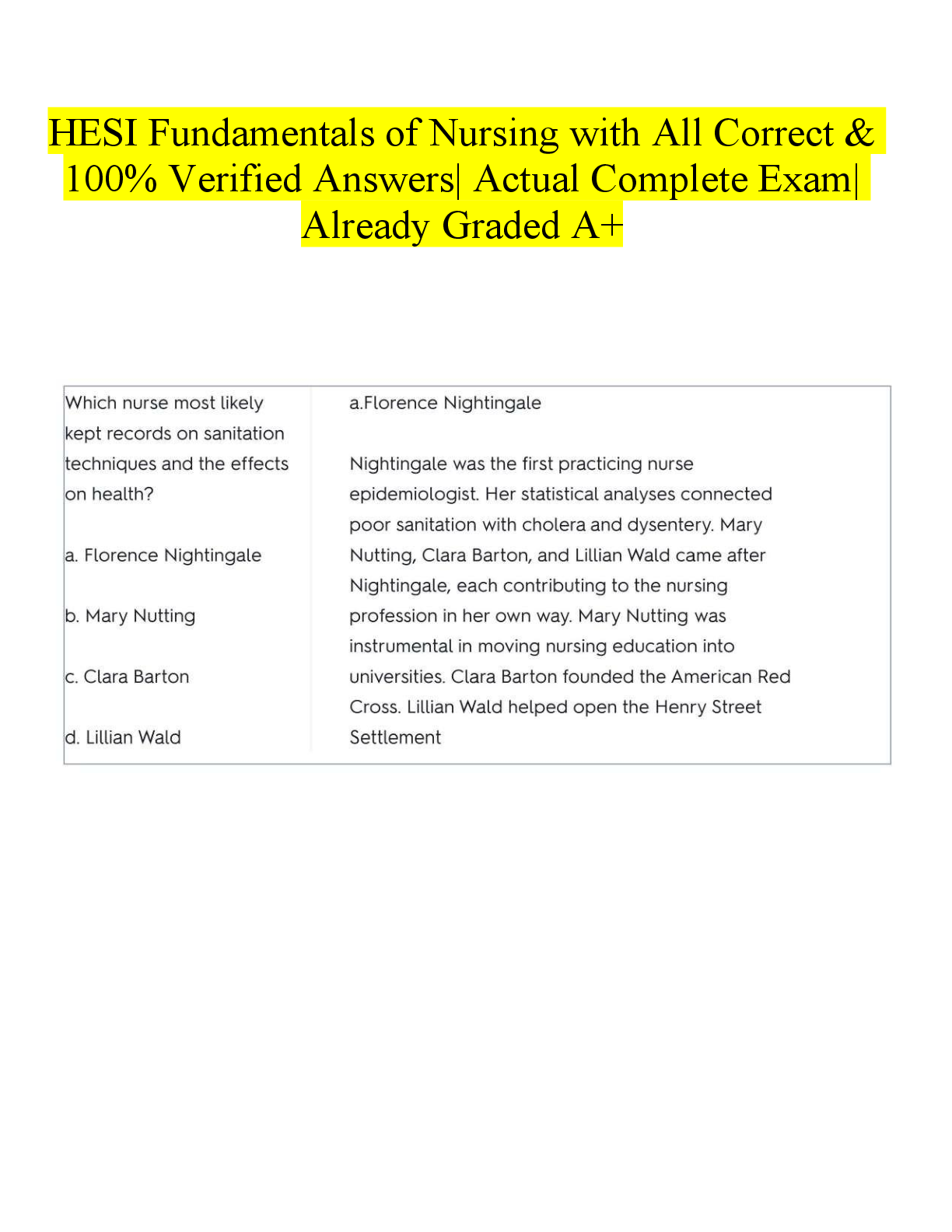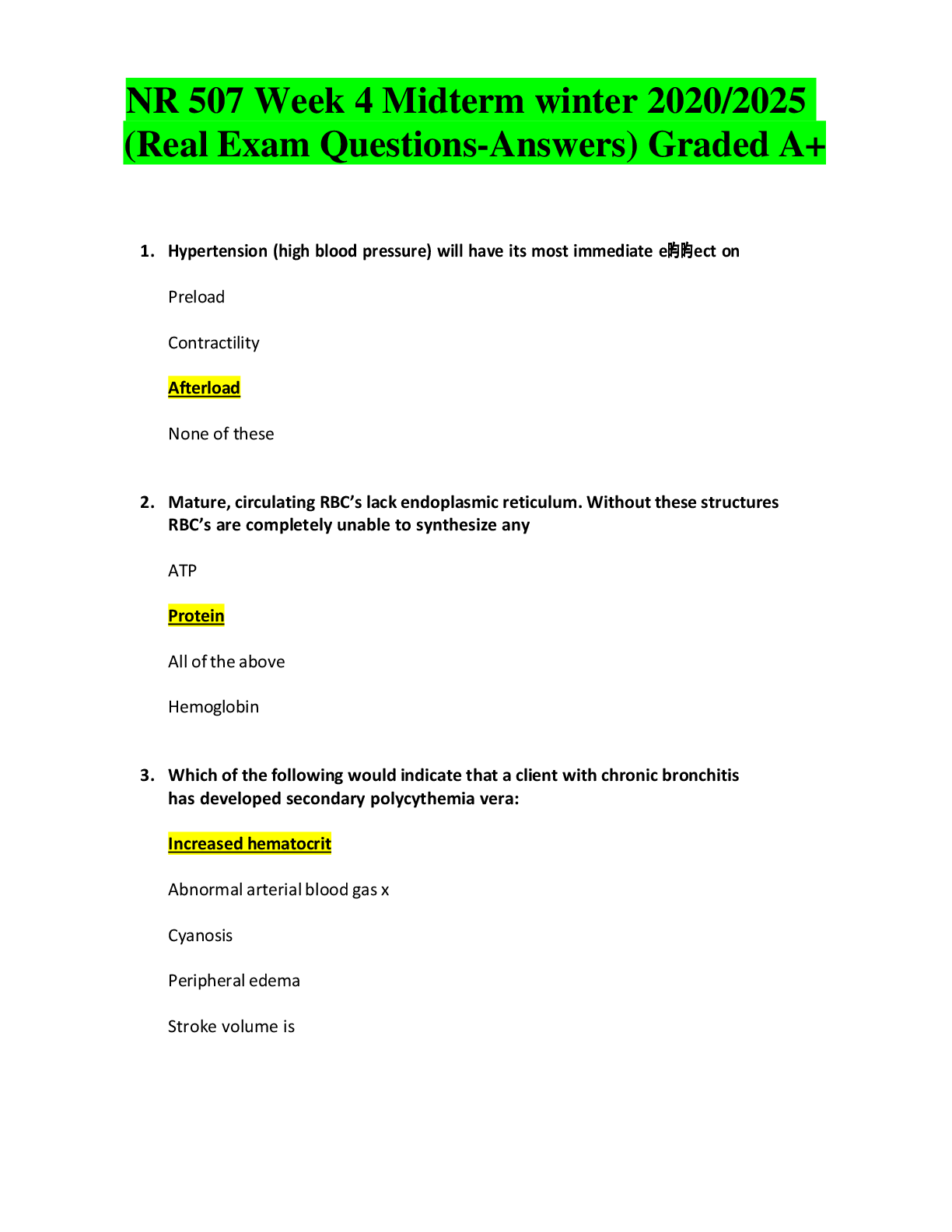PHYSICS EXAM 1 QUESTIONS AND ANSWERS [ALL CORRECT SOLUTIONS]
Document Content and Description Below
1. Two identical light bulbs are connected in series to a power supply as shown. Your friend says the following: “Bulb #1 will be brighter than bulb #2 since it is closer to the positive term ... inal of the battery and the charges have more energy there.” You don’t think this sounds right… a. Explain what is wrong with your friend’s reasoning. Give you own improved energy-based explanation. b. Determine the power output of each bulb. The brightness of a light bulb depends on how much electric potential energy is transformed into internal energy in the light bulb. That means it’s about how much the energy of the charges decreases by, not how much they have when they reach the bulb. Since the two light bulbs are identical and are in series, charges will lose the same amount of energy going through each one. As a result, they will have the same brightness. One way to determine the power output of each bulb is to first determine the current through them. I’ll use Kirchhoff’s loop rule, starting at the negative terminal of the power supply and traversing the loop clockwise 1 2 1 2 1 2 0 0 0 120 0.556 108 108 R R V VV V IR IR V I A R R ε ε ε Δ = ⇒ Δ + Δ + Δ = ⇒− − = ⇒ = = = + Ω + Ω ∑ Score 1: 2: 3: 4: 5: Total /50 ε = 120V 1 R2 = 108Ω R = 108Ω [Show More]
Last updated: 3 years ago
Preview 1 out of 5 pages
![Preview image of PHYSICS EXAM 1 QUESTIONS AND ANSWERS [ALL CORRECT SOLUTIONS] document](https://scholarfriends.com/storage/Exam_1_solutions.png)
Buy this document to get the full access instantly
Instant Download Access after purchase
Buy NowInstant download
We Accept:

Reviews( 0 )
$4.00
Can't find what you want? Try our AI powered Search
Document information
Connected school, study & course
About the document
Uploaded On
Jun 11, 2022
Number of pages
5
Written in
All
Additional information
This document has been written for:
Uploaded
Jun 11, 2022
Downloads
0
Views
115

